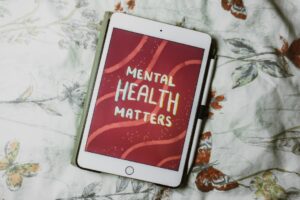Postpartum anxiety vs. postpartum depression: how to tell the difference
After childbirth, many new mothers experience significant emotional changes. While the “baby blues” affect up to 80% of new mothers and typically resolve within two weeks without treatment, more persistent mental health challenges can develop. Understanding the difference between postpartum anxiety (PPA) and postpartum depression (PPD) is crucial for getting appropriate support.
What are postpartum anxiety and depression?
Postpartum depression (PPD) is clinically defined as “a mood disorder that occurs during pregnancy and after childbirth” with symptoms ranging from mild to severe. According to the National Institute of Mental Health, about 1 in 8 women (12.5%) experience perinatal depression symptoms.
Postpartum anxiety (PPA) involves “excessive worry” typically focused on infant safety or maternal competence. CDC research shows that approximately 18% of postpartum women report anxiety symptoms, making it even more common than depression.
Many women experience both conditions simultaneously—35% of women with postpartum anxiety have comorbid depression, while 64% of women with depression have comorbid anxiety.
Key differences in symptoms
While both conditions can significantly impact your daily functioning and bonding with your baby, they manifest in distinct ways.
Postpartum anxiety symptoms:
Postpartum anxiety typically presents as relentless fear and intrusive thoughts about harm befalling your infant. You might experience constant checking on the baby, physical symptoms like racing heart or shortness of breath, panic attacks, and hypervigilance about your baby’s safety. Many mothers with PPA report difficulty sleeping even when exhausted and constant worry about their parenting abilities.
Postpartum depression symptoms:
In contrast, PPD centers on persistent sadness, anhedonia (loss of interest in previously enjoyed activities), and self-blame. You might feel disconnected from your baby, experience overwhelming fatigue beyond normal new-parent tiredness, notice changes in appetite and sleep patterns, have difficulty concentrating, or have thoughts about harming yourself.
As one expert explains, “Anxiety in the perinatal period often presents as catastrophic fears about the baby’s safety, distinct from depression’s emotional numbness.”
Timeline differences
The onset and duration of these conditions can vary:
- Baby blues: Affect 80% of mothers, begin within days of delivery, and resolve without treatment within two weeks
- Postpartum depression: 50% of cases begin during pregnancy; 70% manifest within 4 weeks postpartum and may continue for months if untreated
- Postpartum anxiety: Often begins during pregnancy or in the immediate postpartum period, though it can develop anytime in the first year
Risk factors
While any new mother can develop these conditions, certain factors increase risk:
For postpartum anxiety:
A history of anxiety disorders is the key risk factor for developing PPA. Other factors include perfectionist personality traits, traumatic birth experiences, and limited social support.
For postpartum depression:
A history of depression significantly increases your risk for PPD. Major recent life stresses, pregnancy or birth complications, and lack of social support also contribute to higher risk. Research also shows that non-Hispanic Black women have 80% higher odds of untreated perinatal depression than White women.
Treatment approaches
The good news is that both conditions are highly treatable, though approaches may differ slightly.
For postpartum anxiety:
First-line treatment for PPA is Cognitive Behavioral Therapy (CBT) targeting anxiety-specific symptoms, such as exposure therapy for intrusive thoughts. Mindfulness and relaxation techniques can also be helpful. When necessary, medication—particularly SSRIs like sertraline (Zoloft) and paroxetine (Paxil)—are considered safer options during breastfeeding.
For postpartum depression:
Cognitive Behavioral Therapy or interpersonal therapy are first-line treatments for PPD, with 50-60% remission rates. Antidepressant medication may be prescribed with careful consideration for breastfeeding mothers. For severe cases, combination therapy shows a 75% response rate versus 50% for single-approach treatment.
Self-care strategies
While professional support is essential for moderate to severe symptoms, these self-care approaches can help manage milder symptoms or complement treatment:

For both conditions:
Partner support can reduce PPD risk by 30%. Prioritize sleep whenever possible, accept help with household tasks and baby care, connect with other new parents, and practice gentle movement like walking. Maintaining realistic expectations about motherhood and recovery is also crucial during this time.
For anxiety specifically:
Create “safe infant care plans” (e.g., placing baby in crib during panic attacks) to prevent harm. Practice deep breathing exercises during anxious moments, challenge catastrophic thinking with factual information, limit caffeine, and use guided relaxation techniques designed for early postpartum emotional needs.
For depression specifically:
Schedule small daily activities that previously brought joy, spend time outdoors daily, keep a simple gratitude journal, maintain consistent meal times, and consider light therapy, especially during winter months.
When to seek professional help
While mild symptoms may improve with self-care, certain signs indicate the need for professional support:
Contact your healthcare provider if:
- Symptoms persist longer than two weeks
- Daily functioning is significantly impaired
- You have difficulty caring for yourself or your baby
- You feel disconnected from your baby
- Self-care strategies aren’t providing relief
Seek emergency care immediately if:
- You have thoughts of harming yourself or your baby
- You experience hallucinations or delusions
- You cannot meet basic needs for yourself or your baby
The National Maternal Mental Health Hotline (1-833-852-6262) provides 24/7 support and can connect you with appropriate resources.
Breaking down barriers to care
Unfortunately, maternal mental health conditions often go untreated. Common barriers to seeking help include stigma around mental health challenges, fear of being judged as an “unfit” mother, concern about medication while breastfeeding, and lack of time or childcare for appointments.
Remember that seeking help demonstrates strength and commitment to your wellbeing and your baby’s. As the Office on Women’s Health emphasizes, “Perinatal depression is serious but treatable. With help, you and your baby can be as healthy as possible.”
The bottom line
Postpartum anxiety and depression are common, serious conditions that deserve attention and care. Understanding the differences between them can help you identify what you’re experiencing and seek appropriate support. With proper treatment, the vast majority of women recover completely and go on to enjoy a fulfilling relationship with their child.
If you’re struggling, reach out to your healthcare provider today. You deserve support during this challenging transition, and effective help is available.


